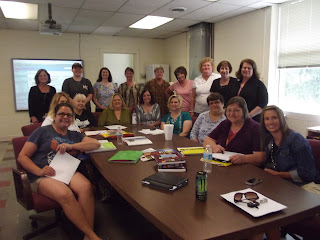Measuring Penny
More PowerPoint presentations from Charity Dowell
Unit Lesson Plan
Measuring Penny
Second Grade, Common Core Learning
Task
Standard:
2.MD.A.1 Measure the length of an object by selecting
and using appropriate tools such as rulers, yardsticks, meter sticks, and
measuring tapes.
2.MD.A.2 Measure the length of an object twice using
length units of different lengths for the two measurements: describe how the
two measurements relate to the size of the unit chosen.
2.MD.A.4 Measure to determine how much longer one
object is than another, express the length difference in terms of a standard
length unit.
2.MD.B.5 Use addition and
subtraction within 100 to solve word problems involving lengths that are given
in the same units, e.g. by using drawings (such as drawings of rulers) and
equations with a symbol for the unknown number to represent the problem.
Student Objective Statement:
I can measure using standard units
(inches/centimeters).
I can choose appropriate tools.
I can create story problems using
addition and subtraction strategies.
I can solve story problems using
words, pictures, and equations.
I can record data on a table.
Essential questions:
When is measurement used at school?
At home? The larger world?
Related questions:
How do I use tools to measure and
compare objects?
How do I use addition and
subtraction when measuring?
Activities & Sequencing:
Hook/Engage (5 mins):
Whole group, small
group, & Independent work:
1.Set
the purpose by introducing the Book Measuring Penny & having students
complete a quick review to access prior knowledge through the following sites
using iPods, iPads or computers.http://www.harcourtschool.com/activity/length_strength3/ http://www.rickyspears.com/rulergame/
2.Whole
group, read Measuring Penny (5-10 mins).
3.Whole
group, complete chart on slide 3. Identify measuring tools and what was
measured from the story (5 mins).
4.Measuring
Activity #1, slides 5-6: Introduce step #1, Review expectations for cooperative learning
time, partner assignments and mathematical
practices. Students break into groups to
measure
5 different classroom items using a non standard unit, aka dog biscuits (10-15mins).
5.Whole
group, introduce step 2 of Activity #1. Think, Pair, & Share
with partners to complete step #2 (10-15 mins).
6.Measuring
activity 2 (centimeters), slides 7-8.
This may be completed at a separate time or day (10-15 mins).
7.Measuring
activity 3 (inches), slides 9-10. This
may be completed at a separate time or day (10-15 mins).
8.Reread
Measuring Penny. Using a stuffed animal
brought from home, students will complete the learning task on slides 11-12.
The actual student created problems can be treated as an exit slip or
cumulative project depending on the assessment purpose, formative or summative
(20-30 mins)

